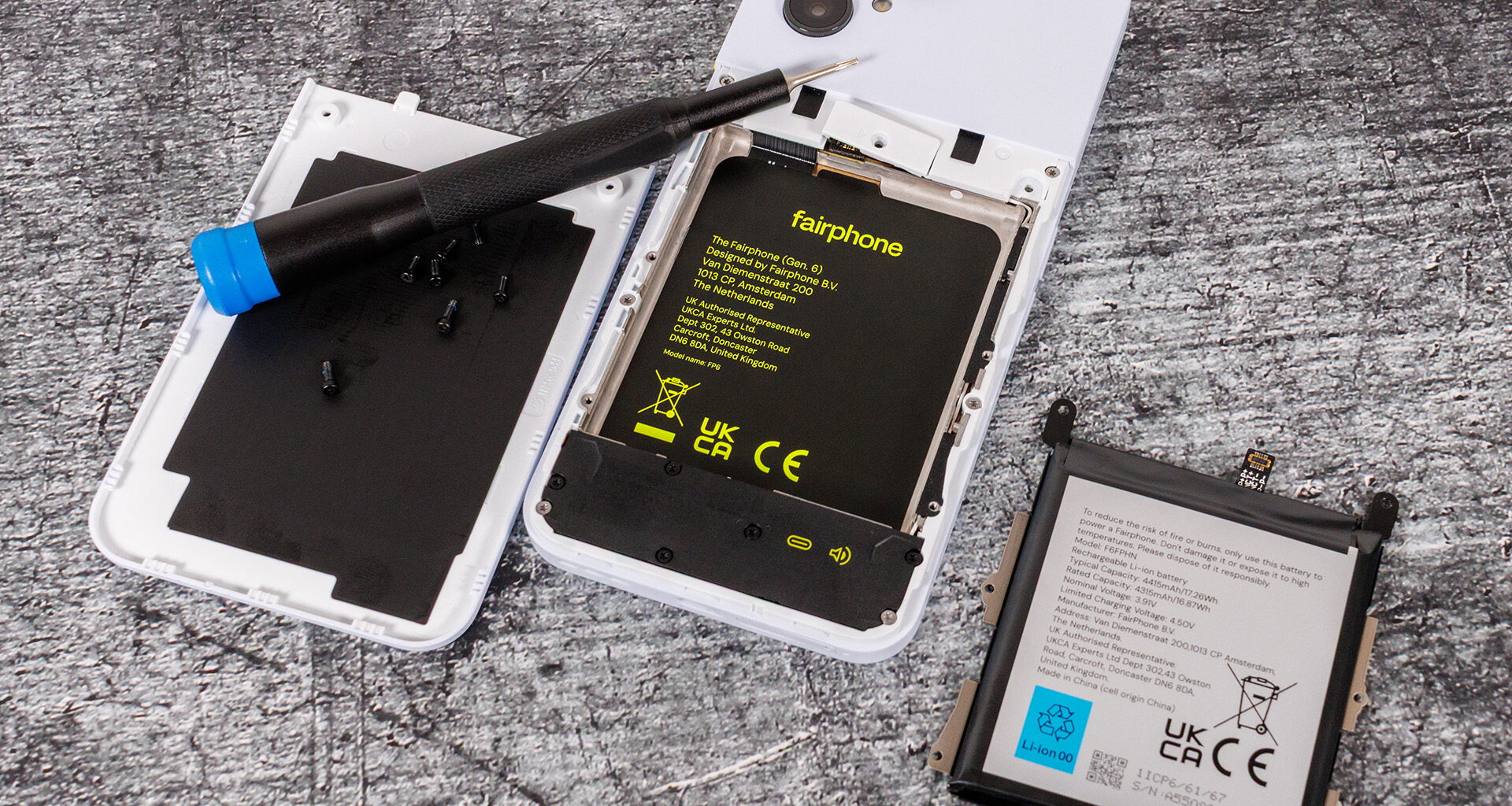The Fairphone 6 is a smartphone that stands out for its approach to sustainability. It is made from 50% recycled materials, is produced under fair conditions, and has a fully modular design, making it easy to replace parts. iFixit has given it the highest rating for repairability. The manufacturer also guarantees eight years of updates and a warranty of up to five years, significantly extending the lifespan of the device.
A total of twelve components of the smartphone can be repaired or replaced by the user. These include the display and battery, as well as the cameras, USB port, and speakers. Fairphone provides instructions for this, and since nothing in the smartphone is glued together, this should not be a major problem for less experienced users.
Technically, the Fairphone 6 offers solid features, including a Snapdragon 7s Gen 3 processor, 8 GB of RAM, expandable storage and an easy-to-use OLED display. Battery life and charging speed are also impressive. Limitations include camera quality, a lack of dust and water resistance, and a slow USB 2.0 port.
The colorful switch on the side is a slider switch preset to turn Fairphone Moments on or off. This is designed to minimize smartphone distractions, reducing not only notifications but also the home screen. Alternatively, it can also be assigned other functions.
As a child I was fascinated by my Commodore 16, and this sparked my enthusiasm for computers. Using my first modem, I surfed the BTX videotext system and later the World Wide Web. I have always been captivated by the latest technologies, and this is especially true for mobile devices such as smartphones and tablets. I’ve been part of the Notebookcheck team since 2013 and have also on occasion written for Notebookinfo.de, and I’m looking forward to testing new innovations for our readers. I like to spend my spare time indulging in photography and barbecues and being with my family.
 Translator: Jacob Fisher – Translator – 2242 articles published on Notebookcheck since 2022
Translator: Jacob Fisher – Translator – 2242 articles published on Notebookcheck since 2022
Growing up in regional Australia, I first became acquainted with computers in my early teens after a broken leg from a football (soccer) match temporarily condemned me to a predominately indoor lifestyle. Soon afterwards I was building my own systems. Now I live in Germany, having moved here in 2014, where I study philosophy and anthropology. I am particularly fascinated by how computer technology has fundamentally and dramatically reshaped human culture, and how it continues to do so.


